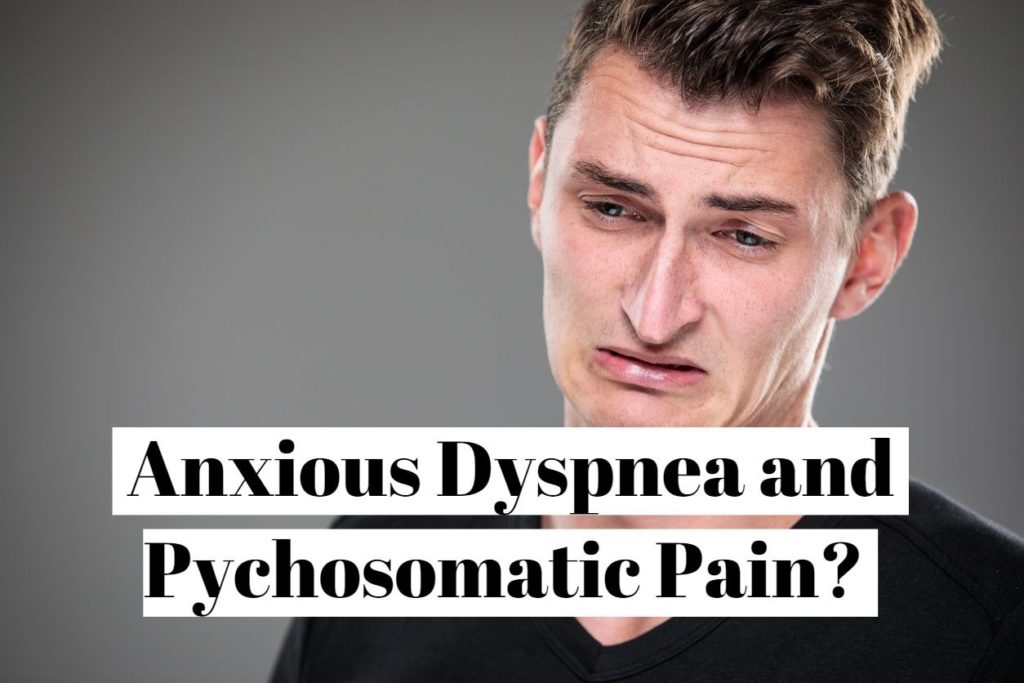Link between anxious dyspnea and psychosomatic pain?
Caution : You must consult your doctor for your health. This page presents only a personal and alternative point of view which should not be considered as an attempt to prescribe medicine.
Most of the time, you believe that the pains related to stress, to anxiety, are imaginary.
However, a patient suffering from anxious dyspnea can simultaneously suffer from real physical pain.
What is anxious dyspnea?

What is psychosomatic pain?
What is the link between anxious dyspnea and psychosomatic pain?
Find out the basics in this article.
Anxious dyspnea: what is it?
Dyspnea is a subjective symptom that manifests itself as difficulty in breathing.
It is an unpleasant sensation, both emotional and sensory, which results in shortness of breath.
Following a strong emotion, the patient may have difficulty breathing.
This uncomfortable situation can be considered to be pain from respiratory diseases.
It is often associated with diseases such as asthma.
Dyspnea can be acute or chronic.
When it is chronic, dyspnea has respiratory and cardiac origins.
In addition, certain emotions such as stress, fear, anxiety can be a source of dyspnea.
This psychological symptom can then result in bodily pain.
The consequence is that the ailments are real and can spread throughout the body even though they have psychic origins.
Thus, when one suffers from anxious dyspnea, it is very likely that one also has psychosomatic pain.
What is psychosomatic pain?
From "Psyche" which means spirit and "soma", body, psychosomatic pains are both psychological and physical.
Psychosomatic pain can be considered as a physical fragility caused and accentuated by psychological factors.
In other words, psychosomatic pains are the result of psychic suffering which manifests as physical pains.
Psychosomatic pain results in pain and tension in various parts of the body.
They manifest themselves as headaches, backaches, chest pain and even pain in the joints.
What is the link between anxious dyspnea and psychological pain?
Today, it is almost impossible to separate anxious dyspnea from psychosomatic manifestations.
Indeed, dyspnea is a symptom of psychosomatics.
Anxious dyspnea and psychosomatic pain both present themselves, through the neural pathways.
In many cases, the degree of bodily pain of psychological origin strongly depends on the presence of dyspnea.
That said, anxious dyspnea can trigger and exacerbate actual pain in the body.
We therefore understand that the ailments caused by anxious dyspnea are not only in the head (imaginary).
They are very real and very painful.
On the other hand, it may happen that the opposite effect occurs.
That is, psychosomatic ailments can lead to respiratory discomfort.
There is therefore a cause and effect link in both cases.
In other words, dyspnea can be the cause of psychosomatic pain but also a consequence of these ailments and vice versa.
What to remember?
Even today, doctors find it difficult to separate anxious dyspnea from psychosomatic manifestations.
Even if there is a lot of research to be done on the subject, the link between dyspnea and psychosomatic pain is obvious.
Body and mind work together and can affect each other.
Thus, in order to limit psychosomatic pain, it is recommended to determine the true cause.
In case the symptom concerned is dyspnea, you should avoid stress.
Medical solutions are offered as well as non-drug alternatives such as the practice of yoga, meditation, breathing exercises, etc.
❤ The ultimate guide to breathing
Intermittent Breathing : Discover the method to quickly relieve your anxiety and chronic fatigue (positive effects from the first use).Read also :
Previous article : Complete alternative health test (Buteyko + Barnes)
Next article : How to improve your cardio while cycling?

